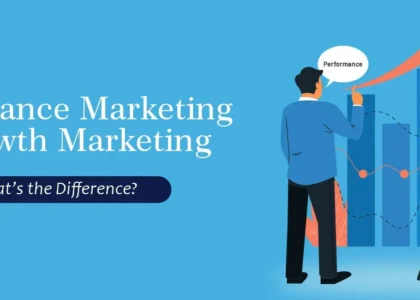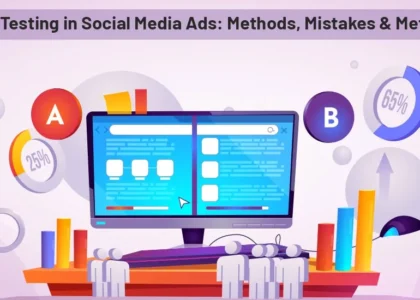If you’ve ever opened Facebook Ads Manager and felt overwhelmed by confusing terms like CPM, ROAS, or Lookalike Audiences — you’re not alone. Whether you’re a small business owner, a marketing intern, or a freelancer managing your own campaigns, understanding the language of Facebook Ads is key to running successful ad campaigns.
This guide will walk you through all the essential Facebook Ads terms — explained with relatable examples and tips to help you confidently navigate your next campaign.
1. Campaign Structure Terms
Let’s start with the building blocks of any Facebook ad campaign.
Campaign
- What it means: The top-level container where you define your main advertising objective.
- Why it matters: It sets the direction — whether you’re aiming for website visits, conversions, leads, or brand awareness.
- In real life: Think of the campaign as the goal of a road trip — like reaching a beach. Everything else (route, car, passengers) aligns with this goal.
Ad Set
- What it means: A level within your campaign where you define who sees your ad, where it appears, and how much you spend.
- Why it matters: This is where targeting, budget, and scheduling live.
- Real-world example: If the campaign is the road trip goal, the ad set is the GPS settings — the route, speed, and fuel budget.
Ad
- What it means: The actual content (image/video + text) users will see.
- Why it matters: It’s what converts attention into clicks or actions.
- Pro tip: Test multiple ads within a set to see what performs best (this is called A/B testing).
2. Metric Terms to Measure Performance
These are the numbers that tell you if your ad is working.
CPM (Cost Per Mille)
- What it means: Cost to show your ad 1,000 times.
- Why it matters: It indicates how expensive your audience is to reach.
- How to use it: A high CPM may suggest poor targeting or ad fatigue.
Example: If your CPM is ₹300, you’re paying ₹0.30 per impression.
CTR (Click-Through Rate)
- What it means: The percentage of people who clicked your ad after seeing it.
- Why it matters: It shows how engaging your ad is.
- Pro tip: Low CTR? Rethink your visuals, headlines, or call-to-action (CTA).
ROAS (Return on Ad Spend)
- What it means: Revenue generated per ₹1 spent on ads.
- Why it matters: It’s the clearest sign of profitability.
- In numbers: If you spent ₹1,000 and earned ₹4,000, your ROAS is 4x.
Frequency
- What it means: How often the same user sees your ad.
- Why it matters: Too high? Your audience might get bored or annoyed.
- Pro tip: Keep it below 3–4 for cold audiences.
3. Audience Targeting Terms
Knowing who to show your ad to is just as important as what the ad says.
Core Audiences
- What it means: Audiences based on demographics, interests, location, and behavior.
- Why it matters: Best for targeting cold traffic.
- Use case: Target “women aged 25–40 who like organic skincare.”
Custom Audiences
- What it means: Audiences built from people who have already interacted with your brand.
- Why it matters: Great for retargeting warm leads.
- Examples:
- Website visitors
- Instagram engagers
- Email subscribers
- Website visitors
Lookalike Audiences
- What it means: New people who share traits with your existing customers.
- Why it matters: Scales your campaigns by targeting people more likely to convert.
- Analogy: If your best customers are all yoga-loving, eco-conscious moms, Facebook finds more people just like them.
4. Optimization & Tracking Terms
These help Facebook deliver your ads efficiently and track results.
Facebook Pixel
- What it means: A small piece of code added to your website.
- Why it matters: It tracks user actions and helps with retargeting and conversion tracking.
- Real-world example: If someone clicks your ad and adds an item to their cart, the Pixel knows — and you can retarget them later.
- Misconception Alert: Many beginners think installing the Pixel is optional. It’s critical for any conversion-based strategy.
Event Tracking
- What it means: Specific user actions you define and track (like “Add to Cart” or “Purchase”).
- Why it matters: Helps Facebook optimize your ads toward meaningful outcomes.
- Use tip: Always prioritize tracking events that align with your campaign objective.
Conversion Window
- What it means: The time frame Facebook uses to attribute a conversion to your ad.
- Why it matters: Helps you understand customer behavior and optimize delivery.
- Common setting: 7-day click or 1-day view.
5. Creative & Delivery Terms
These affect how your ad appears and is delivered.
Placements
- What it means: Where your ad is shown (e.g., Facebook Feed, Instagram Stories, Audience Network).
- Why it matters: Different placements perform differently depending on the creative.
- Pro tip: Let Facebook automatically optimize placements, especially for beginners.
Creative Fatigue
- What it means: When people see your ad too many times and stop engaging.
- Why it matters: It lowers CTR and wastes budget.
- Solution: Regularly refresh creatives and copy.
Ad Relevance Score (Now part of Quality Ranking)
- What it means: How relevant your ad is to your audience, based on engagement, feedback, and expected performance.
- Why it matters: A higher relevance score lowers your costs.
- Tip: Make your ads feel personal and aligned with your audience’s interests.
Common Misconceptions About Facebook Ads Terms
- Myth: A high CTR always means a successful campaign.
Truth: Not if those clicks don’t convert — always measure CTR + ROAS together. - Myth: Lookalike audiences are only for big brands.
Truth: Any business with a solid customer list can use them. - Myth: More budget = better results.
Truth: Without the right targeting and creatives, more spend just means more waste.
Need Help Navigating Facebook Ads?
Mastering Facebook Ads for beginners doesn’t have to be overwhelming. With the right understanding of these Facebook Ads terms, you’re already ahead of most advertisers who waste budget without knowing what they’re doing.
Still unsure how to tie all these terms into a profitable ad strategy?
Arrowpace is a results-driven Performance Marketing Agency that specializes in running optimized Facebook Ad campaigns that actually deliver ROI. Whether you’re a startup, freelancer, or scaling brand, we help you turn clicks into conversions — with full-funnel strategies that work.
Let’s build your next high-performing Facebook ad campaign — the smart way.





